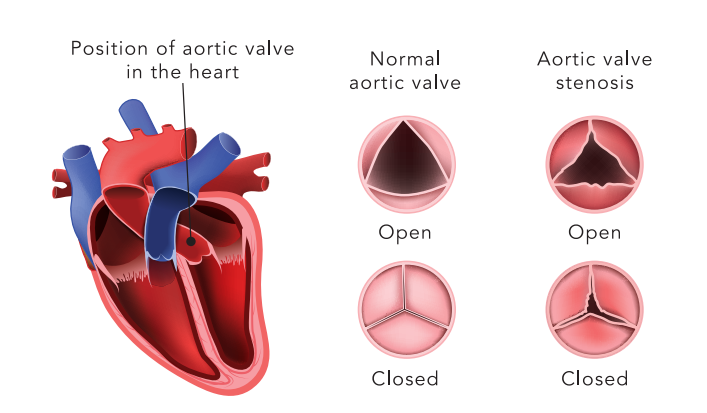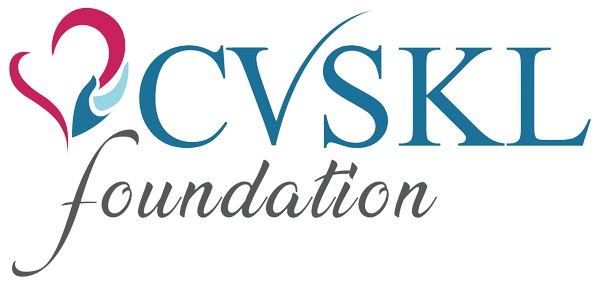An Elegant Treatment for Aortic Valve Stenosis
What is Aortic Valve Stenosis (AS)?
Valves in the heart act like windows to ensure blood flows from one chamber/structure to the next in a single direction.
Aortic valve stenosis is a disease characterized by the narrowing of the valve opening as a result of congenital abnormality, age-related degeneration or rheumatic valvular disease. This will compromise the ability of the heart to pump blood out to supply the body. Over time, this may result in the progressive weakening of the heart function.
Patients with moderate to severe AS may be without any symptoms. In the late stages, however, they may complain of chest pain (angina), shortness of breath (dyspnea) or even fainting spells (syncope). These symptoms are often worsened with physical activity.

What is TAVI ?
TAVI, an acronym for Transcatheter Aortic Valve Implantation (or Replacement, TAVR), is a minimally invasive procedure to replace the diseased aortic valve as opposed to conventional heart surgery. With advancements in device technology, non-invasive imaging, increasing operator expertise and proper patient selection, the outcome of TAVI may be comparable but with less morbidity, shorter hospital stays and resumption of normal activities in a much shorter time.

How does TAVI work
The prosthetic aortic valve is mounted within a special catheter. This catheter is carefully advanced from the groin or shoulder artery and delivered across the diseased valve. The procedure is performed under the guidance of x-ray imaging and transesophageal echocardiography.
Once the valve is optimally positioned, it will be deployed. This new valve will immediately take over the function of the diseased valve.
This TAVI procedure may be conducted under general anaesthesia or conscious sedation.
Benefits of TAVI
- A shorter length of stay in the ICU and hospital
- Faster or almost no need for wound recovery
- Less bleeding
- Earlier ambulation and return to a normal quality of life
Complications of TAVI
- Stroke
- Electrical Conduction abnormalities that may require permanent pacemaker implementation
- Perivalvular Leak
- Obstruction of the coronary arteries
- Possible complications related to Vascular Access site
- Death
Frequently asked questions (FAQ)
Is TAVI a replacement for conventional surgical aortic valve replacement?
No, currently TAVI is indicated for symptomatic elderly patients who are inoperable or patients who are of intermediate and high-risk for surgery. The heart team will access the individual patient’s risk profile to determine the most suitable treatment option.
No. Only a patient who meets the appropriate criteria will be recommended for the TAVI procedure. Good patient selection and multi-disciplinary team management would recommend for TAVI and open surgical valve replacement should be considered if appropriate. Numerous randomized trials are still ongoing to evaluate expanded indications for TAVI.
Surgical valve replacement is preferred for the majority of AS cases.
Yes. With advancements in transcatheter aortic valve technology, the procedure is relatively safe with procedural mortality of less than 1% and low complication rates. Good patient selection coupled with the expertise and experience of the multi-disciplinary heart team is the key to a successful procedure.
Know your options at CVSKL
CVSKL is one of the very few Cardiovascular Centres of Excellence in Malaysia capable of performing the TAVI procedure. For us, It’s always Team Work! Our Heart Team comprises of a group of experienced and internationally renowned cardiologists, cardiothoracic surgeons, vascular surgeons, cardiac anaesthetists and cardiac imaging specialists who work cohesively and collaboratively to ensure the best outcomes for our TAVI patients.
One of the in-house interventional cardiologists is also a TAVI proctor and he is renowned for his pioneering work on the TAVI procedure in Malaysia.
For more information on aortic stenosis and TAVI, please contact us at +603-2276 7000

Reference
- Morton J. Kern, Paul Sorajja, Michael J. Lim. The Interventional Cardiac Catheterization Handbook. 4th ed. Philadelphia: Elsevier, Inc; 2018. Page 401, 403
- Marschall S. Runge, George A. Stouffer, Gam Patterson. Netter’s Cardiology. 2nd ed. Philadelphia: Elsevier, Inc; 2010. Page 289, 340, 341
- Terré JA, George I, Smith CR. Pros and cons of transcatheter aortic valve implantation (TAVI). Ann Cardiothorac Surg 2017;6(5):444-452. doi:10.21037/ acs.2017.09.15
- M.J. Mack, M.B. Leon, V.H. Thourani, et al. Transcatheter Aortic-Valve Replacement with a Balloon- Expandable Valve in Low-Risk Patients. N EngJ Med, 2019; 380: 1695-705




